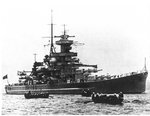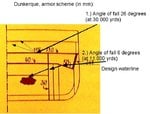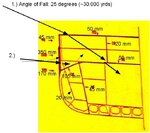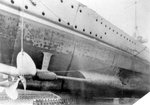Strasbourg:
8-13 in. guns (two quadruple turrets)
16- 5.1 in. guns
Gneisenau:
9-11 in. guns (three triple turrets)
12- 5.9 in guns
These are two of my favorite ships of the war.
What if...these two vessels had clashed during the war?
Although I like the quadruple turret layout of the Strasbourg very greatly, it seems kind of clear that once entering combat with a fast enemy such as Gneisenau (30.7 knots) there could certainly be moments when the french vessel could find herself in a critical blind arc of fire -all main guns located forward of the main tower, leaving only secondary guns aft-.
Given the difference in the caliber of the main battery, Gneisenau can certainly surpass the french ship in the rate of fire department.
Keeping in mind once the duel is accepted anything can happen, who would you see (or wish) emerging as victor?
8-13 in. guns (two quadruple turrets)
16- 5.1 in. guns
Gneisenau:
9-11 in. guns (three triple turrets)
12- 5.9 in guns
These are two of my favorite ships of the war.
What if...these two vessels had clashed during the war?
Although I like the quadruple turret layout of the Strasbourg very greatly, it seems kind of clear that once entering combat with a fast enemy such as Gneisenau (30.7 knots) there could certainly be moments when the french vessel could find herself in a critical blind arc of fire -all main guns located forward of the main tower, leaving only secondary guns aft-.
Given the difference in the caliber of the main battery, Gneisenau can certainly surpass the french ship in the rate of fire department.
Keeping in mind once the duel is accepted anything can happen, who would you see (or wish) emerging as victor?







